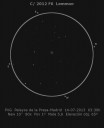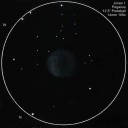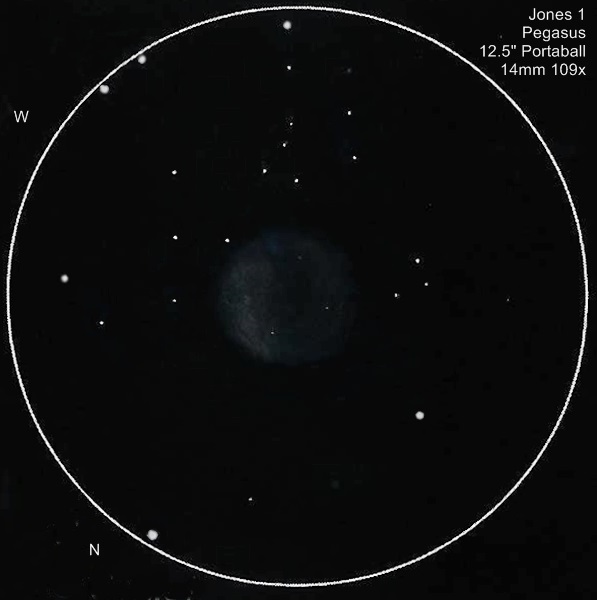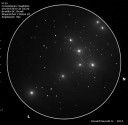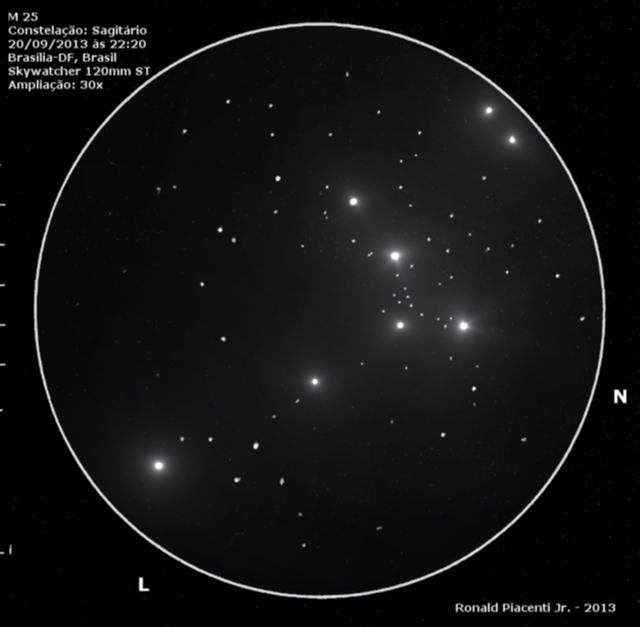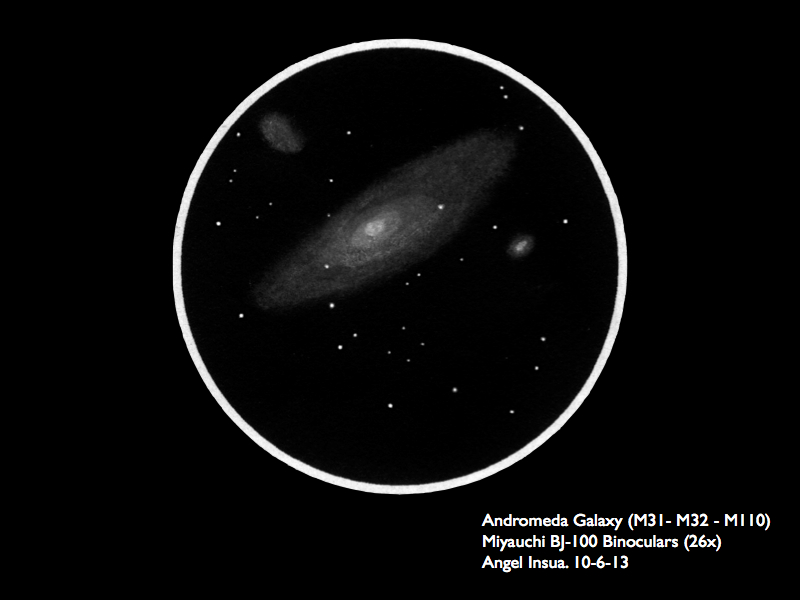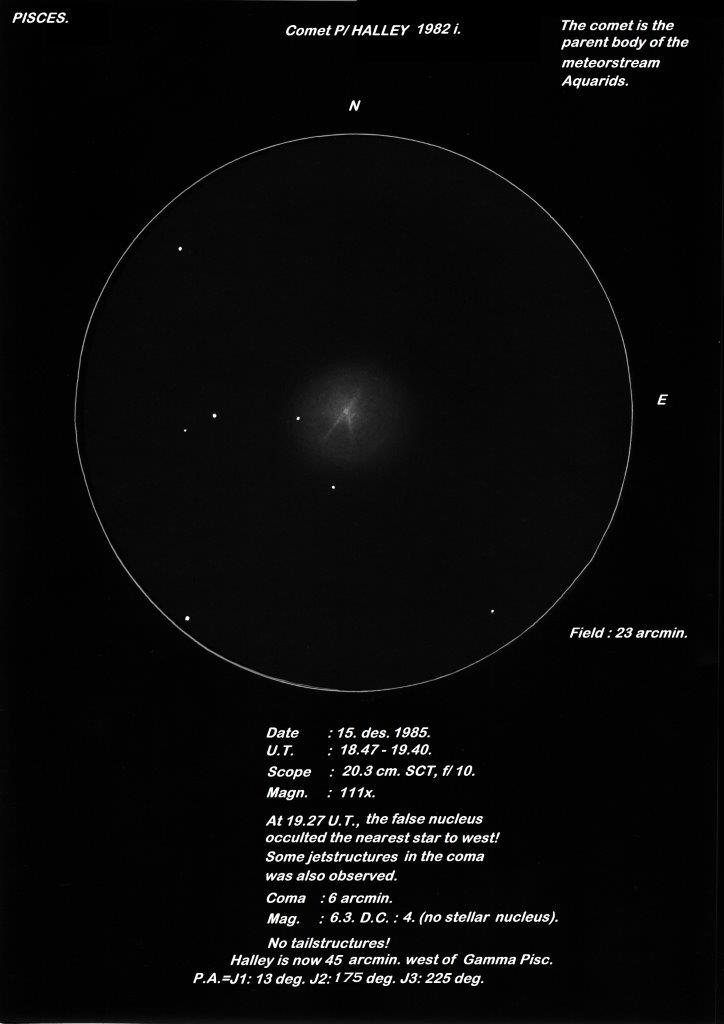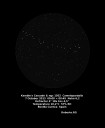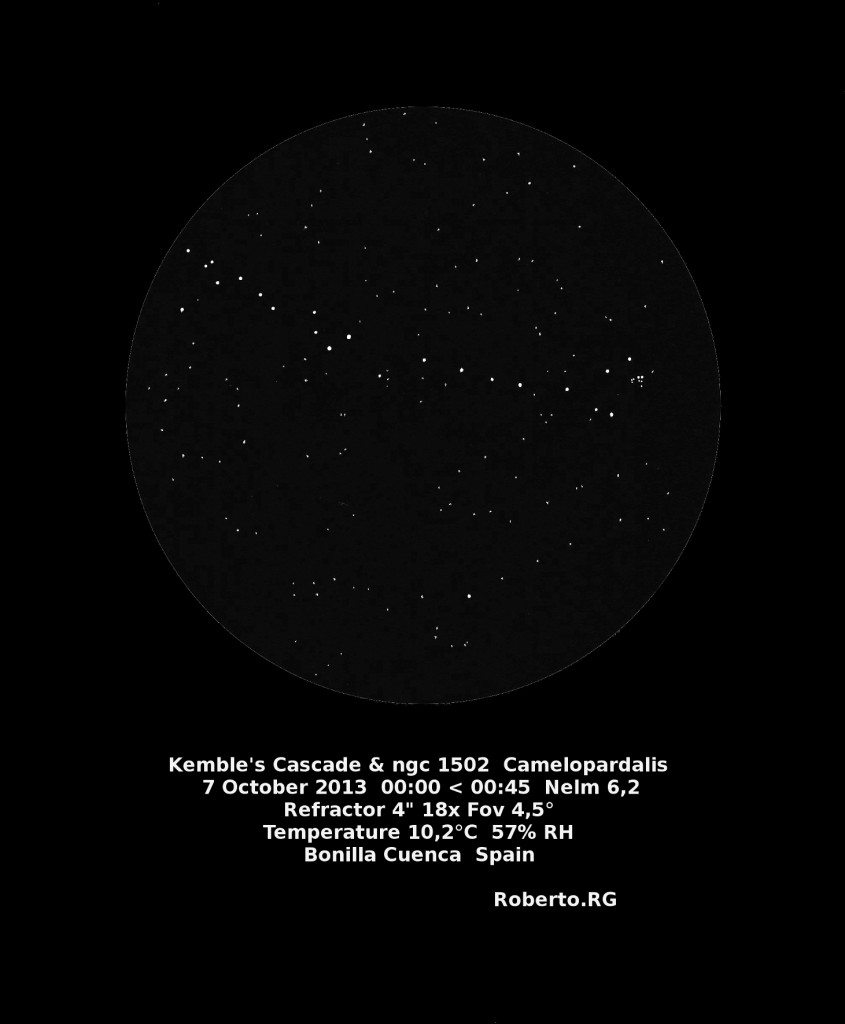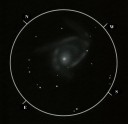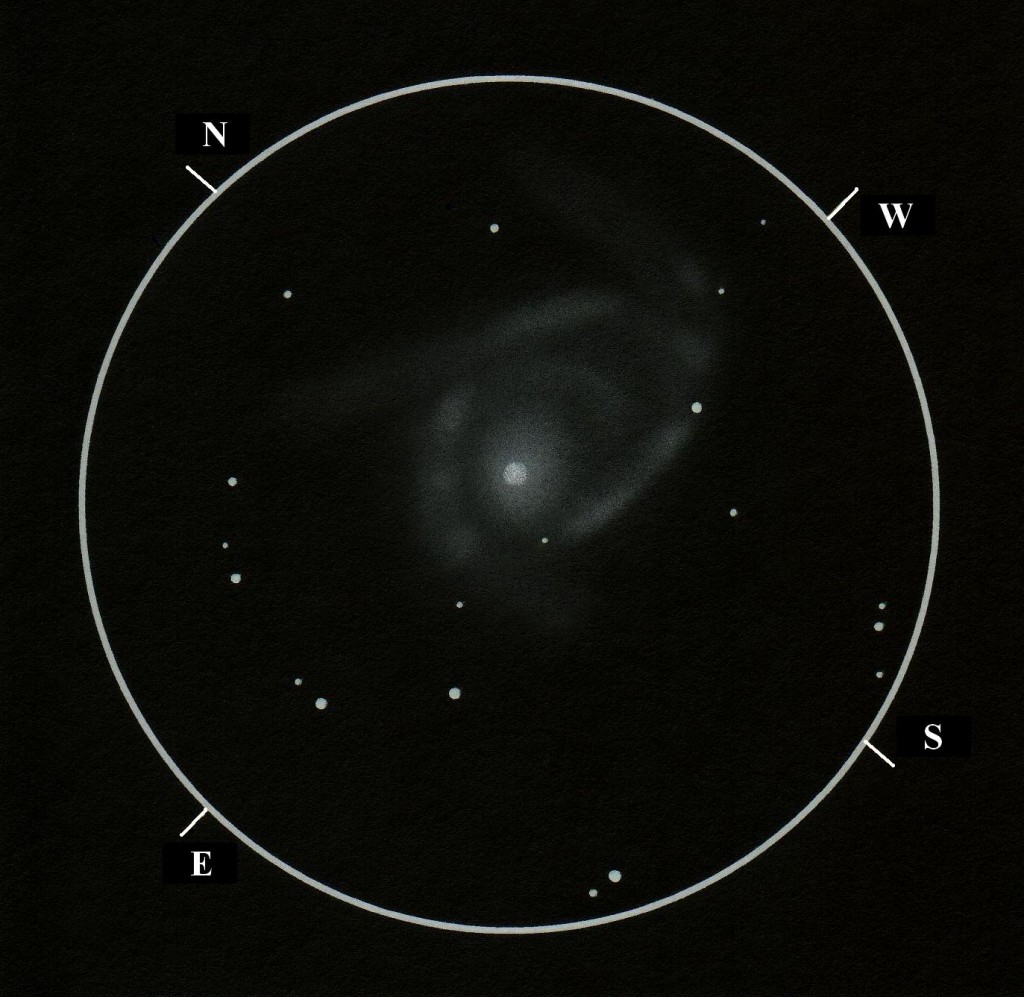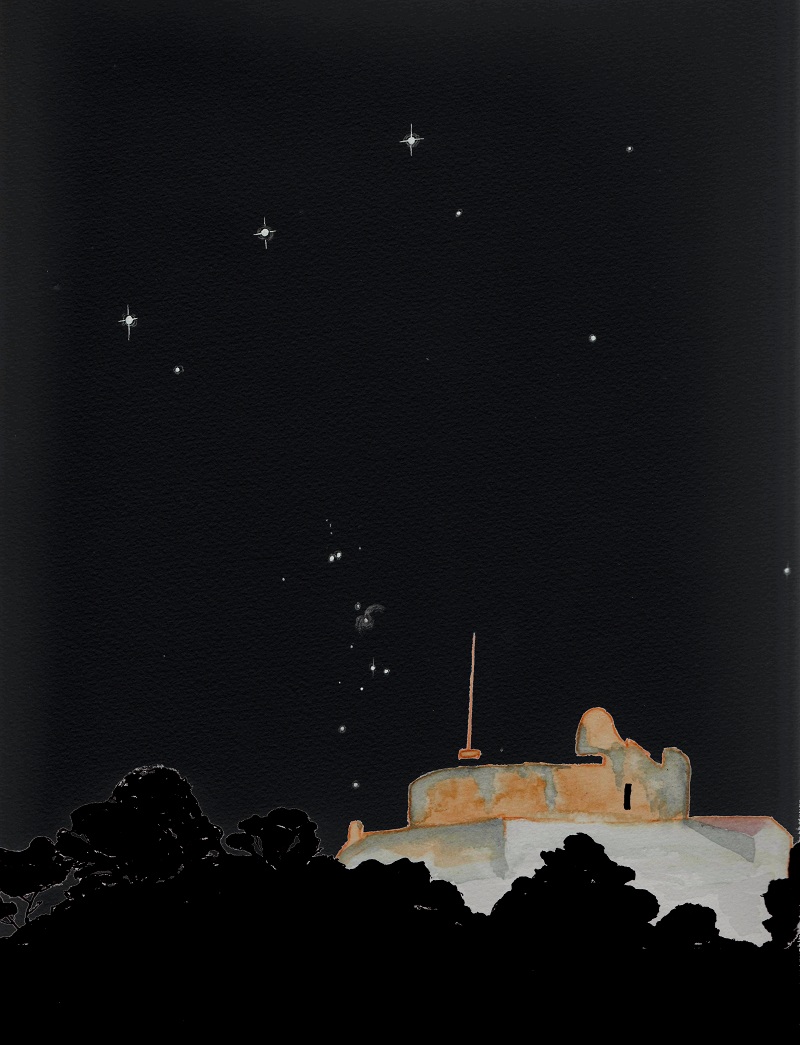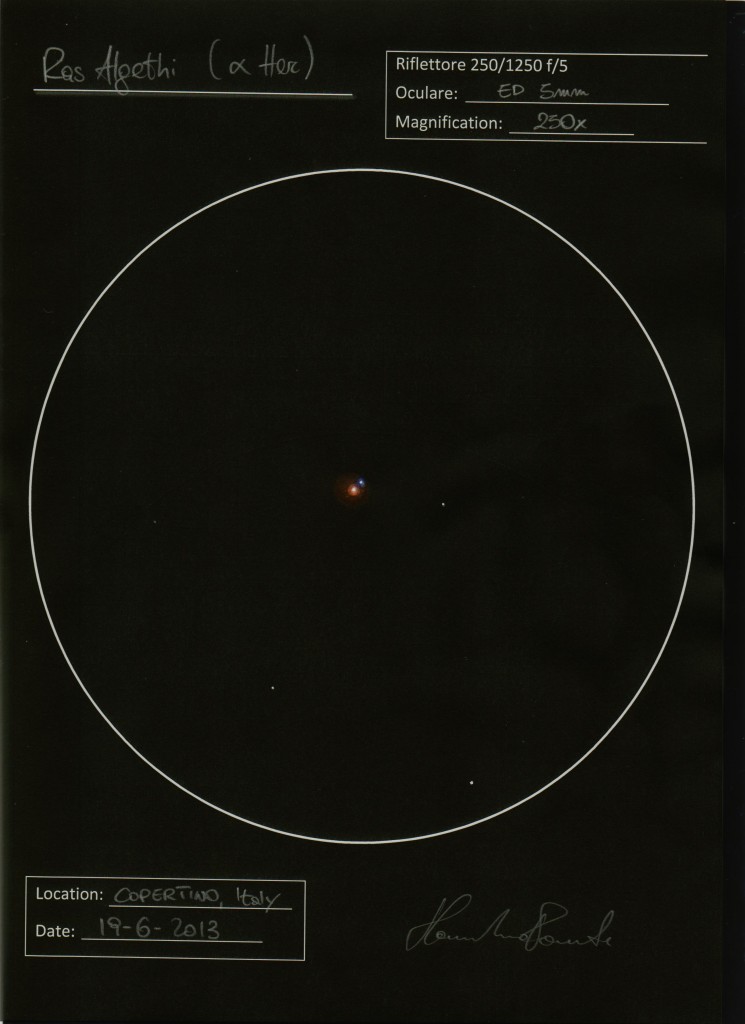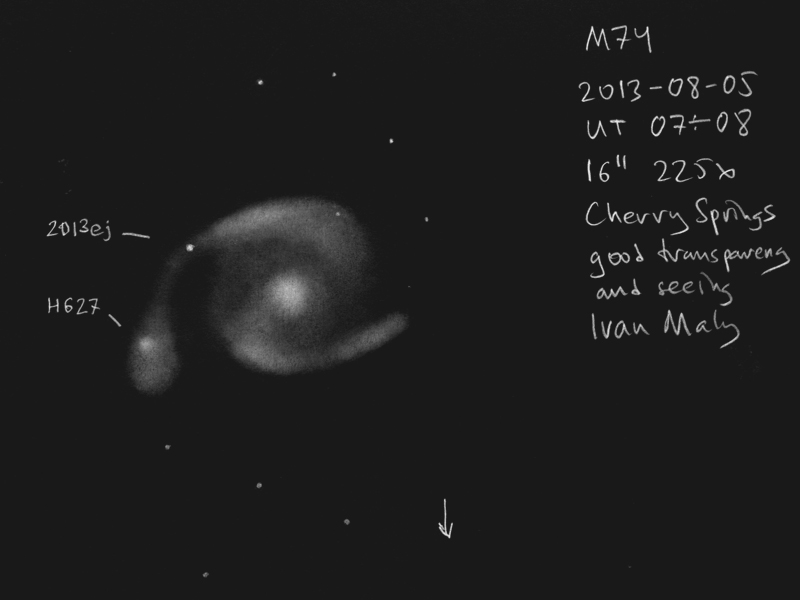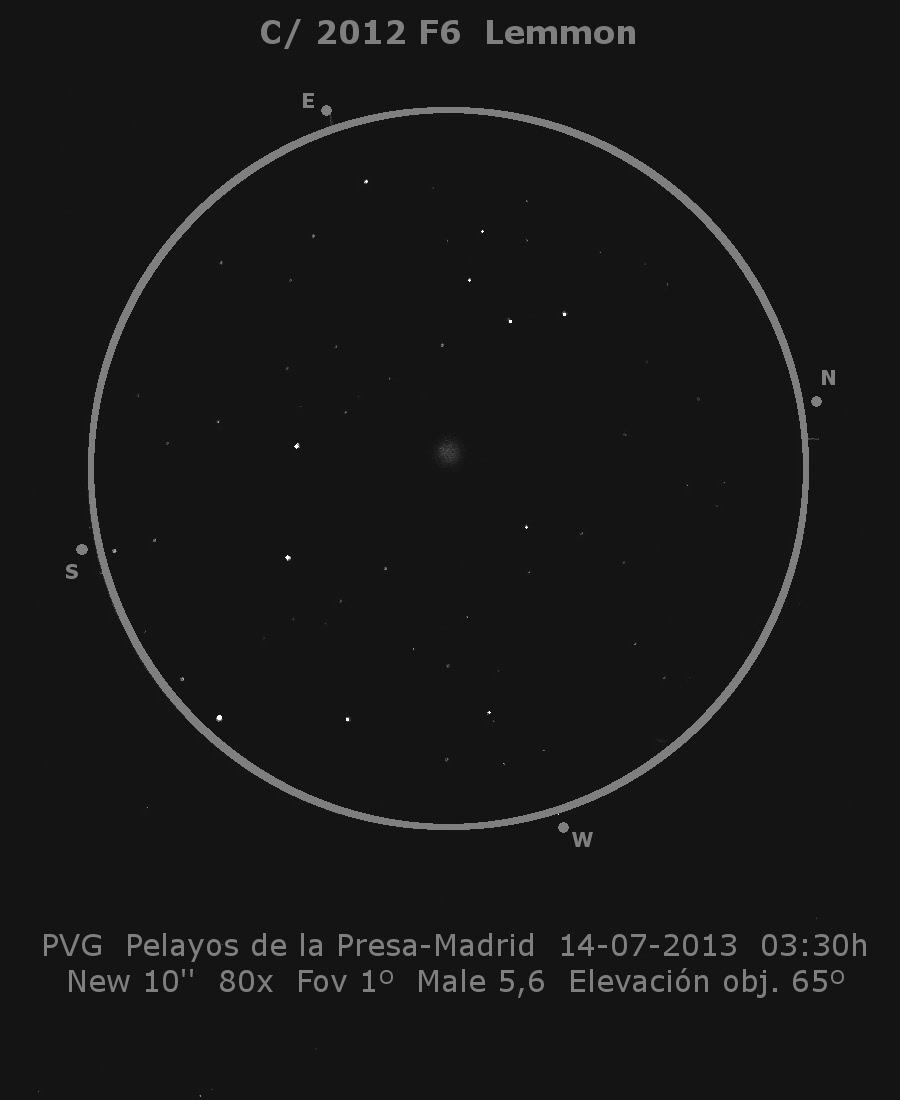
• Object Name: C2012 F6 Lemmon
• Object Type: Comet
• Location: Pelayos de la Presa Spain
• Date: 14/07/2013
• Media: Graphite Pencil HB 2, torchon 1 and 130g drawing sheet
• inverted colors with GIMP 2.8
In late June the comet Lemmon began to be visible to observers in the northern hemisphere, before, in the southern hemisphere, showed a long tail that has characterized this comet. Now we show only a beautiful fluorescent C2 gas coma (turquoise in the photos).
I could see for the first time on June 6, but it was the morning of the 14th when I made a small log with notes and drawing and its distance from the sun was 2 AU and 1.9 AU is Earth Cassiopeia was in in a very rich star field, about 2 ° of M52 and had already risen about 65 degrees above the horizon.
With 80x magnification is shown as a cloud discussion with poorly defined borders, its brightness was low, with the center a little more dense and down very gently outward. The tone of his luster was smooth and looked lively, not dull like galaxies. Its size would be around 3 ‘or 4’ relative to the eyepiece. With no colorfulness lost tail, but it was very nice “so that we can have known” before we leave this year (I think it does not return for another 10 years).
Greetings to all visitors of this page. PVG. Alcorcon, Madrid 19/07/2013
